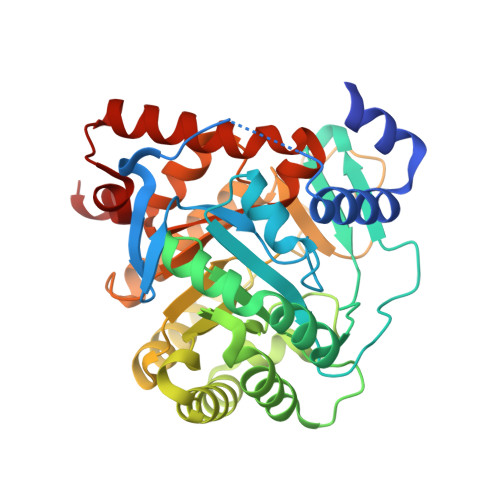Factors Influencing the Specificity of Inhibitor Binding to the Human and Malaria Parasite Dihydroorotate Dehydrogenases.
Bedingfield, P.T.P., Cowen, D., Acklam, P.A., Cunningham, F., Parsons, M.R., Mcconkey, G.A., Fishwick, C.W.G., Johnson, A.P.(2012) J Med Chem 55: 5841
- PubMed: 22621375
- DOI: https://doi.org/10.1021/jm300157n
- Primary Citation of Related Structures:
3ZWS, 3ZWT - PubMed Abstract:
The de novo pyrimidine biosynthesis enzyme dihydroorotate dehydrogenase is an emerging drug target for the treatment of malaria. In this context a key property of Plasmodium falciparum DHODH (PfDHODH) is that it can be selectively inhibited over its human homologue (HsDHODH). However, HsDHODH is also a validated drug target for autoimmune diseases such as arthritis. Here a series of novel inhibitors is described that includes compounds that switch specificity between the two enzymes as a result of small alterations in chemical structure. Structure-activity relationship (SAR), crystallography, docking, and mutagenesis studies are used to examine the binding modes of the compounds within the two enzymes and to reveal structural changes induced by inhibitor binding. Within this series, compounds with therapeutically relevant HsDHODH activity are described and their binding modes characterized using X-ray crystallography, which reveals a novel conformational shift within the inhibitor binding site.
- Faculty of Biological Sciences, University of Leeds, Leeds, LS2 9JT, U.K.
Organizational Affiliation:






















